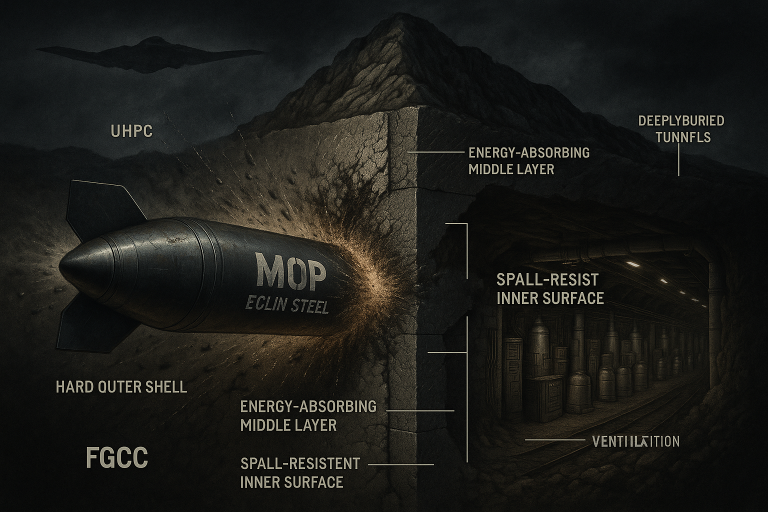The Metallic Muscle Revolution: How AI-Designed Shape Memory Alloys Are Transforming Fighter Jets and Robotics
A quiet materials science revolution is unfolding in laboratories across America—one that could render heavy hydraulic systems obsolete and grant machines unprecedented biomimetic capabilities. At the forefront are high-temperature shape memory alloys (HTSMAs)—metallic “muscles” that remember and return to their original shapes when heated or electrified. These advanced materials promise to transform aerospace engineering, robotics, and medical devices by merging artificial intelligence with atomic-level material design.
The Engineering Imperative: Weight, Complexity, and Performance Limits
Modern fighter jets like the F/A-18 Super Hornet face a critical design constraint: their folding wing mechanisms rely on heavy mechanical systems weighing up to 1,500 kg. This weight penalty reduces fuel efficiency, payload capacity, and sortie readiness—particularly problematic for carrier-based aircraft where space is limited. Traditional hydraulic actuators also suffer from mechanical complexity with hundreds of moving parts requiring maintenance .
The limitations extend beyond aerospace. In robotics, conventional electric motors and pneumatic systems struggle to replicate human muscles’ efficiency, force density, and compliance. As robotics professor Robert Katzschmann notes, “Robot motion today usually requires a lot of energy to maintain a position, whereas soft systems could store energy well” . This energy inefficiency limits operational endurance and application versatility.
How Metallic Muscles Work: The Physics of Atomic Transformation
Shape memory alloys exhibit their remarkable properties through a solid-state phase transformation at the atomic level:
- Martensitic Transformation: Below a critical temperature, the alloy exists in a deformable “martensite” phase where atomic arrangements can be easily rearranged
- Austenite Recovery: When heated above transformation temperatures, the material reverts to its original “austenite” shape through coordinated atomic shuffling
- Two-Way Memory: Advanced alloys can remember both hot and cold shapes, enabling reversible motion without external force
Table: Key Properties of Next-Gen HTSMAs vs. Conventional Materials
| Property | Traditional Actuators | HTSMAs | Advantage |
|---|---|---|---|
| Force Density | 0.3 kW/kg (electromechanical) | 10 kW/kg | 33x higher |
| Stroke Length | Limited by gearing | Up to 8% strain | Simplified design |
| Response Time | 100-500 ms (hydraulic) | <50 ms | Faster maneuverability |
| Weight | Heavy motors/pumps | Minimal moving parts | 70% weight reduction |
| Operating Temp | Limited by lubricants | 250-350°C stable | Enables high-temp applications |
The breakthrough at Texas A&M involves quaternary NiTiCuHf alloys that operate at 250-350°C—critical for jet engine proximity—with record-low thermal hysteresis (energy loss between cycles). This means more efficient, fatigue-resistant actuation even in extreme environments .
The AI Acceleration: From 10 Years to 10 Months
Designing these alloys traditionally resembled searching for a needle in a cosmic haystack. As Dr. Ibrahim Karaman explains: “Even a 0.1% change in composition can radically alter material behavior.” Conventional methods required testing thousands of metal mixtures through expensive trial-and-error .
The Texas A&M team revolutionized this process through a machine learning framework called Batch Bayesian Optimization (BBO):
- Data Ingestion: Existing binary/ternary SMA data trains initial models
- Predictive Modeling: Gaussian Process regression predicts new alloy behaviors
- Active Learning: Algorithms select highest-value experiments
- High-Throughput Validation: Robotic labs rapidly synthesize candidates
- Iterative Refinement: New data continuously improves model accuracy
This approach reduced discovery time by 90% and identified NiTiCuHf compositions with unprecedented thermal hysteresis reduction—achieving in three iterations what previously took decades. As Dr. Raymundo Arroyave states: “We’re not just speeding up alloy discovery—we’re reshaping how discovery happens” .
Transformative Applications: From Fighter Jets to Medical Robotics
Aviation Revolution: Implementing HTSMAs in F/A-18 wing-folding mechanisms could cut actuation system weight by 70%, allowing:
- 15% more fuel capacity or additional weaponry
- 30% faster sortie turnaround on aircraft carriers
- Elimination of hydraulic fluid leaks (responsible for 23% of naval aviation maintenance)
Next-Generation Robotics:
- ETH Zurich’s HALVE actuators use layered ferroelectric materials to achieve muscle-like motion at just 900V (vs. 6,000-10,000V previously). Their self-sealing, waterproof design enables:
- 45-gram grippers lifting 10x their weight
- Fish-like swimmers moving silently through water at 3 cm/s
- Safe human-robot interaction through compliant force control
- Embryonic-inspired robot swarms could leverage similar principles for collective shape-shifting, enabling adaptive structures that self-repair or reconfigure on command
Medical Advancements: Miniaturized SMAs could enable:
- Steerable catheters navigating blood vessels
- Self-expanding stents deploying without external power
- Micro-surgical tools with tactile feedback
5 Technical Hurdles and Solutions
Despite breakthroughs, challenges remain:
Strain Limitations: Current HTSMAs achieve ≈5% strain—impressive for metals but less than biological muscles (20-40%). Texas A&M is now optimizing for “meaningful strain in service” through precipitate engineering .
Fatigue Life: Phase transformations cause microstructural damage over cycles. Solutions include:
- Nanocomposite architectures with shape memory matrix
- Grain boundary engineering to prevent crack propagation
- Topology-optimized component designs that localize strain
Manufacturing Scalability: HTSMAs require precise composition control. The Texas A&M team is developing:
- Additive manufacturing with in-situ alloying
- Rapid thermal processing protocols
- Quality control via AI-powered spectral analysis
The Future: Autonomic Systems and Living Machinery
Metallic muscles are catalyzing a paradigm shift toward biologically inspired engineering:
- 2028 Outlook:
- Fighter jets with seamless morphing wings adapting to flight conditions
- Surgical robots with tactile sensitivity surpassing human hands
- Self-repairing bridge components responding to earthquake stresses
- Military-Civilian Synergy: DARPA’s ACE program is already advancing autonomous systems like the XQ-58A Valkyrie drone ($4 million/unit), which could integrate SMA-based morphing surfaces for unprecedented agility .
- Materials Intelligence Convergence: Future alloys may incorporate embedded sensors and neural networks, creating materials that learn optimal actuation patterns. As Karaman envisions: “We’re entering an era where materials don’t just respond—they adapt and anticipate” .
The development of metallic muscles represents more than a technical achievement—it signals the dawn of materials intelligence. By merging AI-driven design with advanced metallurgy, scientists have created substances that breathe life into machinery, granting planes the grace of birds and robots the suppleness of living organisms. As these alloys progress from laboratory curiosities to flight-certified components, they promise to redefine performance boundaries across industries. The future belongs not to brute mechanical force, but to the elegant, atomic dance of shape-shifting metals—where every actuator thinks, every surface adapts, and machines move with unprecedented organic grace.






